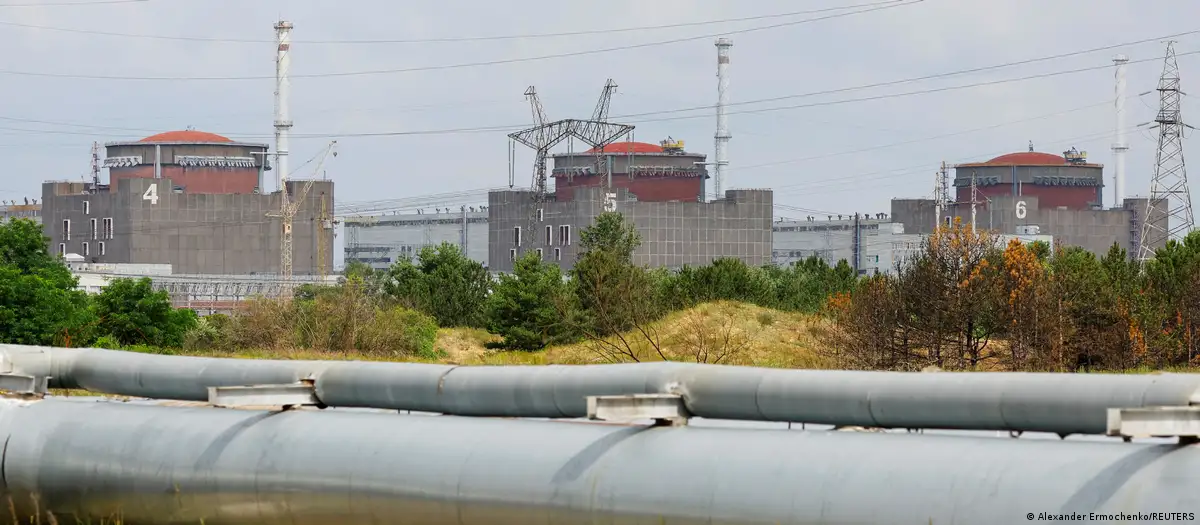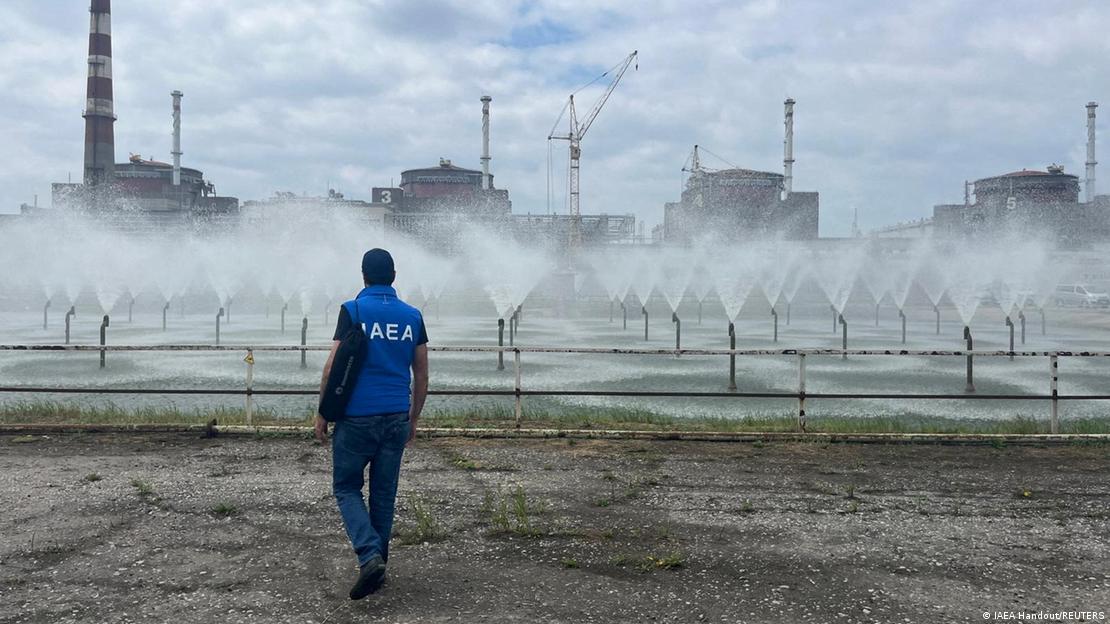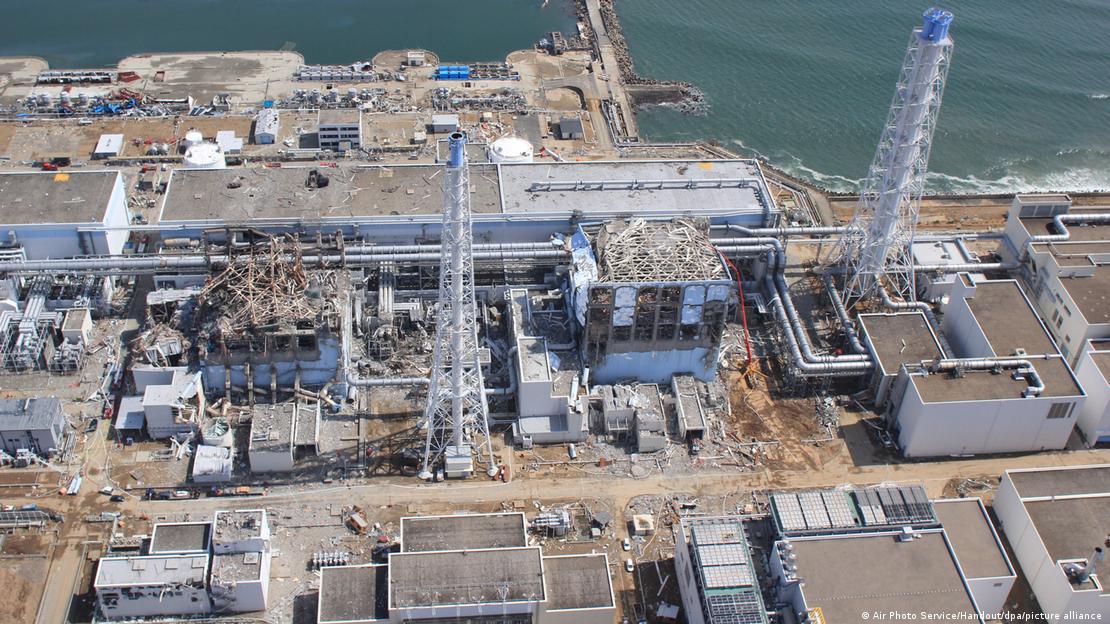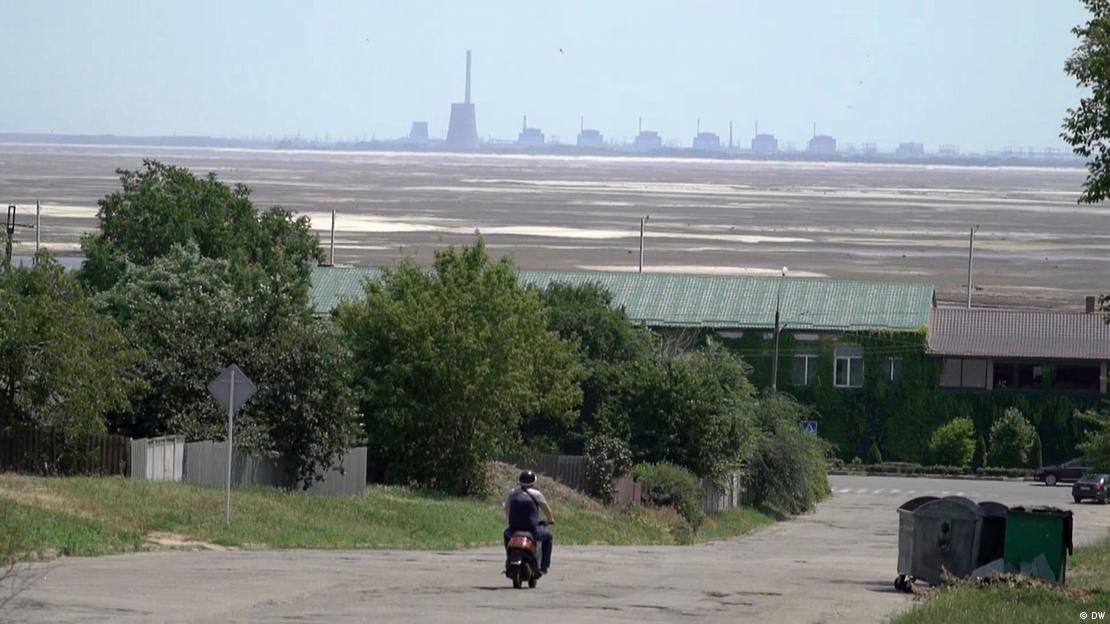
What could be the worst-case scenario of Zaporizhzhya NPP explosion?
The fact that the Zaporizhzhia Nuclear Power Plant (ZNPP) and the coastal zone of the Kakhovka Reservoir were mined by the Russian army was known in the first months of the plant’s occupation. This was reported by the Ukrainian energy company Energoatom, to which ZNPP is subordinated. After the destruction of the Kakhovka HPP and a significant decrease in the water level in the Kakhovka reservoir, Kyiv reported that the occupiers had mined the cooling pond, an artificial reservoir that had previously been replenished from the reservoir with water used for the ZNPP reactor cooling system.
Kyiv: Explosives near four ZNPP power units
Ukrainian President Volodymyr Zelenskyy recently said that Russia is considering a scenario of a terrorist attack with a radiation release at the plant, citing Ukrainian intelligence. For this purpose, the Russian side has already prepared everything and replaced the cooling pond, said Kirill Budanov, head of the Main Intelligence Directorate of the Ukrainian Defense Ministry, in an interview with the British publication The New Statement. According to him, the occupiers also deployed equipment packed with explosives near four of the plant’s six power units. “The situation has never been as dire as it is now,” emphasized Kirill Budanov.
The International Atomic Energy Agency (IAEA) did not report any mining of the cooling pond, but noted that ZNPP was mined around the perimeter and in some places inside the plant. The mines “were placed, as explained by the security personnel (of the Russian occupation authorities of the station – Ed.), for defensive purposes,” the organization’s report after the visit to the station states. At the same time, IAEA Director General Rafael Grossi said that “the core safety functions of the facility will not be significantly affected.”

Ukraine is very surprised by this statement by the IAEA. Ukrainian nuclear safety expert Olha Kosharna is convinced that mining of the main elements of the ZNPP reactor cooling system poses a direct threat to the nuclear power plant. “There are mines in the pipelines, around the sprinkler pools, inside the station. It is not necessary to place explosives under the reactor, it is enough to drain all the water from the cooling pond, blow up the shandora (a shutter shield that opens to drain water – Ed.), or blow up the pipelines leading to the cooling of the reactor water,” she said in an interview with DW.
Is the cooling system a weak point of ZNPP?
Water from the cooling pond plays a critical role in the cooling system of nuclear reactors. By pumping it from the pond into the splash pools, this water is used to cool the reactor fuel assemblies so that they do not start to melt due to overheating. Zaporizhzhya NPP has six power units that have been out of service since last fall. Five of them are currently in cold shutdown, and one is in hot shutdown. However, even though they are stopped, they still need water for cooling, because even in this state, fuel assemblies generate heat. In the cold shutdown state, the water is heated to 70 degrees Celsius, and in the hot shutdown state, it is heated to 280 degrees, Dmytro Humeniuk, head of the safety analysis department of the State Scientific and Technical Center for Nuclear and Radiation Safety of Ukraine, told DW.
Experts point out that if the cooling system is damaged, the power unit will have eight days to “cold shut down” before an accident occurs. When a reactor is in a “hot shutdown,” there are only 27 hours to prevent radiation leakage. “I think that all this is being done – blackmail and threats – solely to stop the Ukrainian army’s counteroffensive in this region,” Kosharna said.
“Fukushima scenario at Zaporizhzhya NPP
Therefore, the explosion of any element of the cooling system could cause an accident at ZNPP according to the Fukushima scenario. In 2011, an earthquake and subsequent flooding at the Fukushima Nuclear Power Plant in Japan resulted in the cooling of three nuclear reactors, followed by a nuclear meltdown and radioactive release. “A resettlement zone was created, but three years later people returned, and now only one third of the zone remains, because there were small doses of radiation,” says Mark Zheleznyak, professor at the Institute of Environmental Radiology at Fukushima University, Ukrainian hydrologist and radiologist.

According to him, if such a scenario with the explosion of the cooling system is used by the Russians at ZNPP, there will be no catastrophically destructive consequences of this terrorist attack. “It is very difficult to create a dead zone there, as we are afraid, if the reactors are not working. It will not be a radiation disaster, because there can be no release of radioactive iodine at a non-operational plant,” the scientist emphasizes and advises not to succumb to panic and not to buy potassium iodide tablets used to protect the thyroid gland from radioactive iodine. At the same time, he notes that only the cities located close to the ZNPP – Enerhodar and Nikopol – are at the highest risk of releasing other radionuclides.
Two scenarios of events during the ZNPP accident
The Ukrainian Center for Nuclear and Radiation Safety has published two scenarios for the development of events at ZNPP and predicted the consequences that an accident at the nuclear power plant could lead to. The first scenario is an accident when the protective meter-long containment (vessel) of the reactor is not damaged, but melting of its core occurs inside. This may be in case of a complete blackout of one ZNPP unit or damage to the cooling system. Scientists modeled such a scenario and concluded that “the radiation consequences of the accident will be mainly limited to the sanitary protection zone – 2.5 kilometers around the ZNPP,” the State Scientific and Technical Center for Nuclear and Radiation Safety of Ukraine said in a statement. “This will mostly concern only ZNPP personnel. In this case, it is necessary to limit the stay of people outdoors within the sanitary protection zone. Iodine prophylaxis is not required,” the center said.

Another scenario developed is an accident with an open container or in case of its failure or damage. “Under this scenario, the radiation consequences of the accident will have a wider geography and worse consequences. The contamination area will depend on a specific scenario and meteorological conditions. In the event of such an accident, we will keep you informed about the level of emissions, the development of the situation at the emergency power unit and the predicted contamination zone,” the center promises.
Worst-case scenario – serious consequences within a radius of 20 kilometers
Ivan Kovalets calculated the worst-case scenario that could occur at ZNPP in terms of the size of the zone where the annual effective dose for one-year-old children exceeds 10 millisieverts. The head of the Environmental Informatics Department at the Institute of Mathematical Machines and Systems Problems of the National Academy of Sciences of Ukraine says that he used the RODOS decision support system for radiation accidents and processed 150 real meteorological scenarios. According to his calculations, very serious consequences of such a “worst-case scenario” accident could occur within a radius of up to 20 kilometers from the nuclear power plant in the direction of the wind. In this case, immediate evacuation will be required, the expert explains. Instead, in the area up to about 550 kilometers from the plant, certain health effects may also be recorded, which will be stochastic in nature. “At such distances, there will be no need for urgent countermeasures or resettlement. But to some extent, it may be affected,” Ivan Kovalets told DW.

